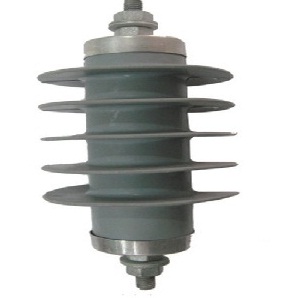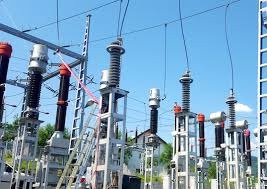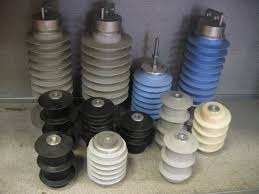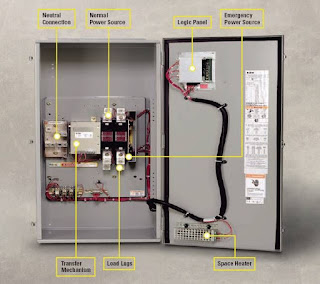Surge arrester- Defination,working and types
SURGE ARRESTER
On the flow of current in a power line increases at some point, then electrical surges will occur. The most popular surge can be occurred due to lightning because sometimes lightning can cause an electrical surge. Throughout a lightning storm, lightning may hit somewhere close to a power source and affect the voltage supply during a power line. Sometimes, an electrical device can be protected from the lightning surge effects by detaching it from the source of power. A surge arrester cannot work perfectly due to very high voltage which is generated from lighting.
What is Surge Arrester?
Definition: A protective device that is used to protect the electrical power system from surges caused by lightning is known as surge arrester. It includes two terminals like high voltage and ground. Once an electric surge travels through the surge arrester from the power system, then a huge voltage current can travel to the insulation directly otherwise to the ground terminal to protect the system from damage.

Working Principle of Surge Arrester
The Working of Surge Arrester is, whenever lightning or power surge hits a particular electrical system, then it will harm the entire system as well as electrical devices that are connected to this system because these devices work at a fixed voltage range.
If the voltage received by the electrical devices is high than the fixed voltage, then they get damaged or blow up. To overcome this situation, a surge arrester is used to protect the devices from damage, because this arrester ensures that the huge voltage cannot travel through the electrical system.
So this is a voltage-activated device, used to protect computers as well as other electronic equipment transient voltages or surges in data cables or electrical power from a switching surge/ lightning. The working of this arrester can be done by redirecting the additional voltage into the earth wire instead of traveling throughout the electronic devices.
How to Install?
Generally, the installation of surge arresters can be done close to an electric meter to defend the electrical system used in a residence or building from the power surge effects which are occurring from the outside.

It protects other electrical devices that are connected to the power source, however, they cannot provide whole protection from surges that occurs from defective wiring otherwise the overall working of electrical appliances used in homes or in offices.
Surge Arrester Types
These are available in different types based on its construction as well as its working like secondary, distribution, intermediate and station class.

Secondary Arrester
The rate of voltage supply used by this arrester is below 1000V. These arresters are employed to defend from a secondary surge. The failure rate of a transformer can range from 0.4% to 1%. And 50 to70% of all malfunctions can be occurred because of the low-side surges.
Secondary surge protection used in the house otherwise at the service entry will cause extra surge responsibility to the service transformer. Whenever a secondary arrester is used, then failure rates of the transformer can be decreased radically through an order of magnitude.
Distribution Arresters
These arresters are rated from 1 kV to 36 kV. Distribution arrester is used within transformers like beneath oil, elbow and cubicle-mounted.
Normal duty arrester is employed in less lightning applications, heavy-duty type arrester is used in high lightning applications and riser pole arrester is employed wherever the distribution line travels from overhead to underground & finally evolution arrester is used in all overhead applications.
A riser pole type arrester can be used to stop the voltage surge observed by the equipment and underground cable.
Intermediate Arresters
These types of arresters give better discharge voltages and it includes a high fault current resist capability. The voltage ratings of these arresters are from 3 kV to 120 kV.
Station Class Arresters
These types of arresters will give the best expulsion voltages of all arresters. It provides high current handling and highest fault current resist capability. The voltage ratings of these arresters range from 3 kV to 684 kV.
Surge Arrester Failure Modes
Surge arrester failure can result in short circuits in houses. In most of the situations, a fault occurs because of dielectric breakdown once the internal structure of the system damages. So the arrester cannot resist the applied voltage like lightning, normal system voltage, switching surge overvoltage. In this, humidity otherwise moisture plays an essential role because moisture will increase leakage current, thermal heating and cause discharge. The faults of surge arrester can cause due to some reasons like sealing defect, moisture ingress, and influence of moisture in Arrester.
Characteristics of Surge Arrester
The electrical characteristics of this include the following.
- The voltage across this arrester where the current flow is interrupted after spark over, this is known as resealing voltage.
- It has the highest power frequency which ranges 50 Hz/60 Hz
- Maximum constant operating voltage
- Rated short circuit current
- Nominal discharge current and the values are 5 kA, 10 kA & 20 kA.
- These are connected among the life conductors as well as the earth.
- While installing the arresters with above 52 kV, surge arresters may be supplied by discharge operation counters.



Comments
Post a Comment